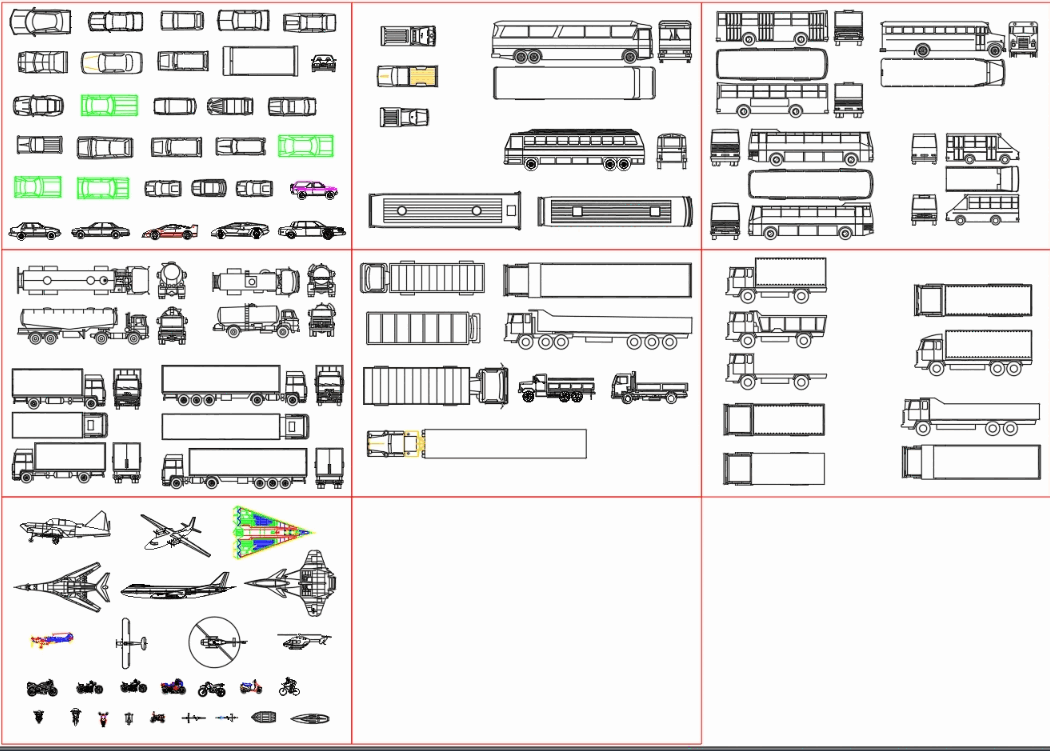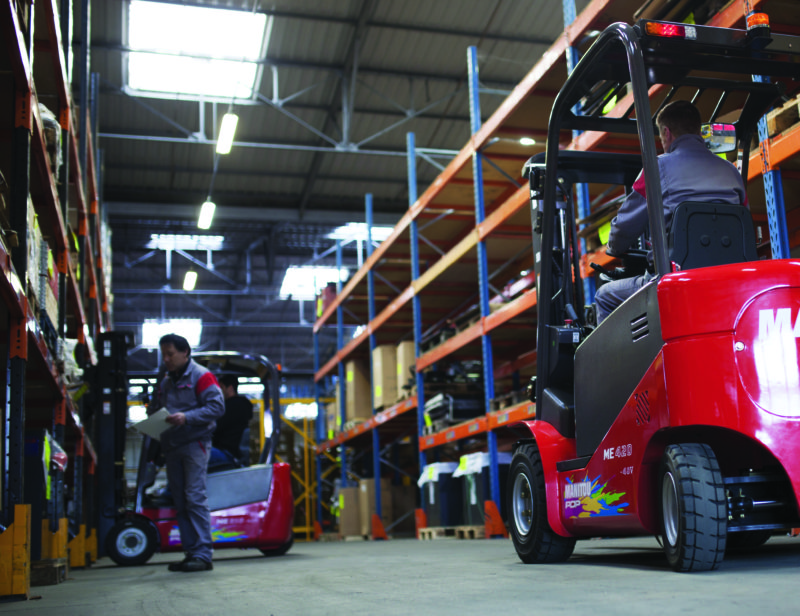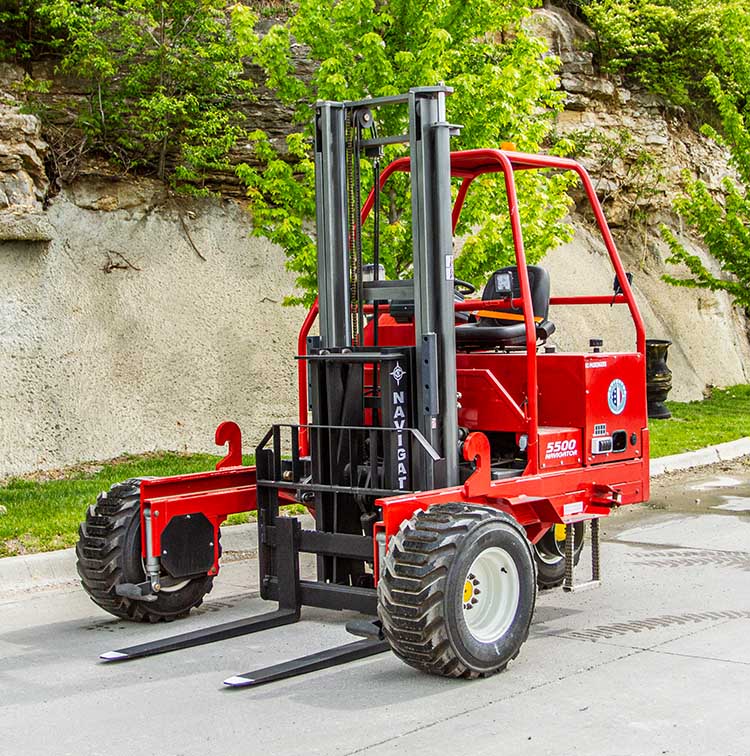Pneumatic-tired earth-moving haulage equipment (trucks, scrapers, tractors, and trailing units) whose maximum speed exceeds 15 miles per hour, shall be equipped with fenders on all wheels to meet the requirements of Society of Automotive Engineers SAE J321a-1970, Fenders for Pneumatic-Tired Earthmoving Haulage Equipment. Federal OSHA requires that forklift vehicles have to be inspected at least daily, or after each shift when used around the clock. You will find this requirement in the Powered Industrial Truck standard at 1910.178(q)(7). OSHA does not require that forklift inspections be documented.
- Prowler forklifts are among the most advanced truck-mounted forklifts available on the market today. Suitable for use with most trucks and trailers, the Prowler forklift is equipped with the most robust frame and mast components in its class and strongest steering design available, making it easy to maneuver in the tightest areas. The Prowler forklift meets or exceeds applicable ANSI B56.6.
- A piece of equipment that is both critical and commonplace in a variety of industrial applications is a truck-mounted forklift. (Also called a piggyback forklift, TMFL, all-terrain forklift, or Donkey.) The unit is essentially a truck that has an open, payload-carrying bed and a forklift attached to the back. The forklift is secured with hooks, chains, or latches that keep the equipment from shifting when the truck is in.
- At all times, an operator’s hands, arms, feet, legs, and head must remain within the forklift truck. Forks, whether loaded or not, should be kept as low to the ground as possible and tilted back. When approaching corners, always slow down and sound the horn. Be sure to watch for swing in the load and the rear of the truck.
Question: First off, what is a truck mounted forklift?
Answer: A truck mounted forklift is a forklift model that can be attached to the back of a truck or trailer to be transported easily.
Question: What’s the difference between a truck mounted forklift, a trailer mounted forklift, and a piggyback forklift?
Answer: There is none. These names are synonymous with each other.
Question: What are some brands that manufacture piggyback forklifts?
Answer: Princeton, Moffett, Sellick, Hiab, Manitou, and Palfinger are just a few.
Now that you have some basic background, let’s get into why truck mounted forklifts are important and how they can help your business.
When To Use A Truck Mounted Forklift
You may be thinking: “why would I ever need to mount my forklift to a truck?” There are actually plenty of instances where piggyback forklifts are useful.
For one, think about your customer’s facility. Do they have the proper equipment to unload inventory you’re supplying them? Does their location have a traditional loading and unloading dock? If not, bringing your own forklift is the simplest solution, plus it can make you a couple extra dollars on a sale.
Trailer mounted forklifts are often used for off-site tasks, like construction sites and landscaping jobs. Hitch kits allow you to transport your forklift and inventory simultaneously.
Benefits of A Piggyback Forklift
As explained earlier, having a trailer or truck mounted forklift gives your company an advantage over competitors who do not. It’s a value-added service that you can either work into your pricing or charge upsells with every purchase. Your customers will appreciate the extra step you’re taking, while your bottom line will appreciate the extra income you’re making. Customers pay extra for convenience, and that’s what you’re providing them.
Efficient is defined as “maximum productivity with minimum wasted effort or expense.” Truck mounted forklifts definitely increase efficiency. Imagine transporting inventory an hour away, but not being able to bring your forklift with you. It would look something like this:
- Drive an hour to drop-off location
- Unload inventory (without the help of a forklift)
- Drive an hour back to your facility
- Load forklift
- Drive an hour back to the drop-off location
- Unload forklift, then move inventory with the forklift
- Drive an hour back to your facility
Depending on how much inventory is being delivered, this could be a whole day event! Instead, piggyback forklifts can cut out half this time.
Trailer mounted forklifts can also improve safety. You know which forklift is ideal for unloading, transporting, and lifting your inventory. However, your customers may not. By bringing your own forklift, you’re ensuring safe equipment to achieve necessary tasks. Because they are transported on the back of a truck or trailer, piggyback forklifts are generally smaller and more compact. This allows them to easily maneuver in tight spaces – which is crucial for locations that don’t have traditional loading/unloading docks.
Truck Mounted Forklifts In Phoenix
Looking for a piggyback forklift in Phoenix and the surrounding areas? Reliable Forklift Sales is your best bet. Contact us today and our forklift experts will help you decide which trailer or truck mounted forklift is perfect for your next job. We offer new and used models, and even same-day forklift rentals.
It’s time for your business to become more efficient, save and earn some extra money, and improve safety with a truck mounted forklift.
Forklift Components – Parts of a Forklift: Forklift is a small industrial vehicle, having a power operated forked platform attached at the front that can be raised and lowered for insertion under a cargo to lift or move it. Forklifts serve the needs of various industries including warehouses and other large storage facilities.
Locating the common parts of a forklift is vital to make certain that your operators are reliably using equipment as intended in a safe manner. The following list of forklift terminology will help to ensure all associates are prepared to use the equipment effectively and identify the forklift parts that require the attention of a maintenance technician.
Contents
- 2 Forklift parts and functions
- 3 Forklift components
Forklift parts name
Forklifts are powered by electric battery or combustion engines. Some Forklifts allow the operators to sit while driving and operating the machine while others require the operator to stand. It is being extensively used throughout the industry for transporting materials and goods.
If you could list the most essential forklift components, what would they be? Every part of a forklift is “important” in some way, but which ones really stand out? Certain forklift parts and functions are designed to maintain the safety of the equipment and to help prevent malfunctions that can lead to severe accidents.
- tires
- frame
- counterweight
- cab
- fuel
- main lift cylinder
- mast
- carriage
- load backrest
- attachments
Forklift parts and functions
Forklift tires
Tires: There are many types of tires available, both for indoor and outdoor use*, but not all tires are made the same. It is important to consult with a tire expert who can make sure that the correct rubber compound and traction pattern are used. Then you must check to make sure you are not being sold recycled tires or cheaper versions made overseas.
Forklift frame
Truck Frame: is the base of the machine to which the mast, axles, wheels, counterweight, overhead guard and power source are attached. The frame may have fuel and hydraulic fluid tanks constructed as part of the frame assembly.
Counterweight forklift
Counterweight – is a mass attached to the rear of the forklift truck frame. The purpose of the counterweight is to counterbalance the load being lifted. In an electric forklift, the large lead-acid battery itself may serve as part of the counterweight.
Forklift overhead guard
Overhead Guard: is a metal roof supported by posts at each corner of the cab that helps protect the operator from any falling objects. On some forklifts, the overhead guard is an integrated part of the frame assembly.
Forklift main lift cylinder
Tilt cylinders: are hydraulic cylinders that are mounted to the truck frame and the mast. The tilt cylinders pivot the mast backward or forward to assist in engaging a load.
Cab forklift
Cab: is the area that contains a seat for the operator along with the control pedals, steering wheel, levers, switches and a dashboard containing operator readouts. The cab area may be open-air or enclosed but it is covered by the cage-like overhead guard assembly. When enclosed, the cab may also be equipped with a cab heater for cold climate countries along with a fan or air conditioning for hot weather.
Forklift mast

Mast: is the vertical assembly that does the work of raising and lowering the load. It is made up of interlocking rails that also provide lateral stability. The interlocking rails may either have rollers or bushings as guides.
The mast is driven hydraulically, and operated by one or more hydraulic cylinders directly or using chains from the cylinder/s. It may be mounted to the front axle or the frame of the forklift. A ‘container mast’ variation allows the forks to raise a few meters without increasing the total height of the forklift. This is useful when double-loading pallets into a container or under a mezzanine floor.
Forklift components
Each part and component on a counterbalanced forklift is designed to perform a specific job and the safe operation of a forklift includes the operator understanding its moving parts, capabilities, and limitations.
Forklift carriage
Carriage: is the component to which the forks or other attachments mount. It is mounted into and moves up and down the mast rails by means of chains or by being directly attached to the hydraulic cylinder. Like the mast, the carriage may have either rollers or bushings to guide it in the interlocking mast rails.
Forklift load backrest

Load Back Rest: is a rack-like extension that is either bolted or welded to the carriage in order to prevent the load from shifting backward when the carriage is lifted to full height.
Attachments forklift
Attachments: may consists of a mechanism which is attached to the carriage, either permanently or temporarily, to help in the proper engagement of the load. A variety of material handling attachments are available. Some attachments include side shifters, slip sheet attachments, carton clamps, multipurpose clamps, rotators, fork positioners, carpet poles, pole handlers, container handlers and roll clamps.
Forklift forks
The forks are long extensions (like arms) that are attached to the carriage. They are used to support the load from the bottom. They come in a variety of widths and adjust from right to left on the carriage.
Forklift Power Source
Power Source: may consist of an internal combustion engine that can be powered by LP gas, CNG gas, gasoline or diesel fuel. Electric forklifts are powered by either a battery or fuel cells that provide power to the electric motors. The electric motors used on a forklift may be either DC or AC types.
Components and parts of forklift
What are the three major parts of a forklift?The three major parts of a lift truck are the body (truck), overhead guard, and hydraulic lift.
What are the prongs on a forklift called?Forks, Also known as the tynes, the forks on a forklift are used to make direct contact with a load for transport. They are attached to the forklift carriage and are designed to carry a load from the bottom.
What are forklifts made of?The technological advances in the forklift have made the forklift truck one of the most vital components of today’s speedy material handling industry. The welding robots used to assemble these forklift trucks are top-notch and produce an incredibly sound structure. First, the body is constructed from steel and painted.
What is the mast on a forklift?Also referred to as an ‘Upright’, the mast is the vertical assembly on the front of the forklift that does the work of raising, lowering, and tilting the load. Most masts are ‘three stages’ meaning there are three channels on each side.
How heavy is a forklift?The average automobile weighs approximately 3,000 lbs and the average forklift weighs close to 9,000 lbs. Also, forklifts are heavier in the rear to counter the weight of items being carried in the forks.
The most read

Forklift Brands
Forklift On Back Of Truck Video

Forklift On Back Of Truck Cost
Forklift Brands and models: Which forklift brand is best? Top brands in the world: Caterpillar, Toyota, Volvo, Hyundai, forklift brands and models, top 10 forklift brands.
Forklift Safety Procedures
Forklifts are extremely useful workplace vehicles, as long as they are used safely and appropriately by operators who are appropriately trained and competent to use them. Learn about the rules for driving forklifts.
